Photo Feature | An authentic Khukuri isn’t easily (or cheaply) made
Khukuri, every Nepali household probably has one. History is something that is constantly rewritten, and Nepal’s history is no different. Yet, to this day, khukuri remains an enduring symbol of the brave Gorkhas, of Nepali valor in battlefields. It adorns many of our national emblems and insignias of security forces.
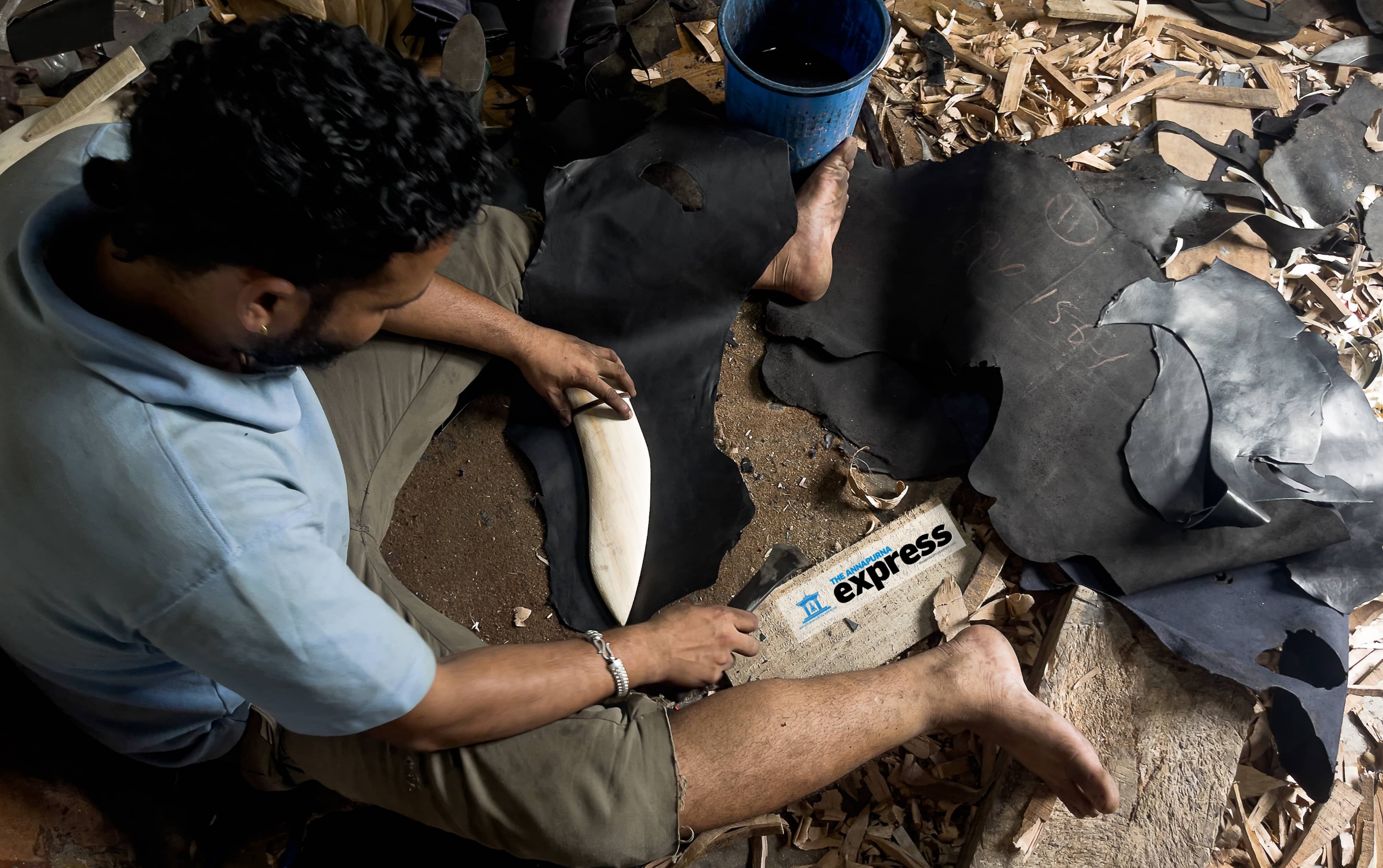
This week I visited Khukuri House Handicraft Industry Nepal (KHHI) at Patan Industrial Estate to learn more about the art of making the iconic knife. It has been forging and selling khukuris since 1991.

The process starts with priming of the metal. Gopal Limbu, general manager of KHHI, says only two metal types can be used to make authentic Nepali khukuris: 52100 (a carbon alloy steel) and 5160 (high carbon chromium spring steel).
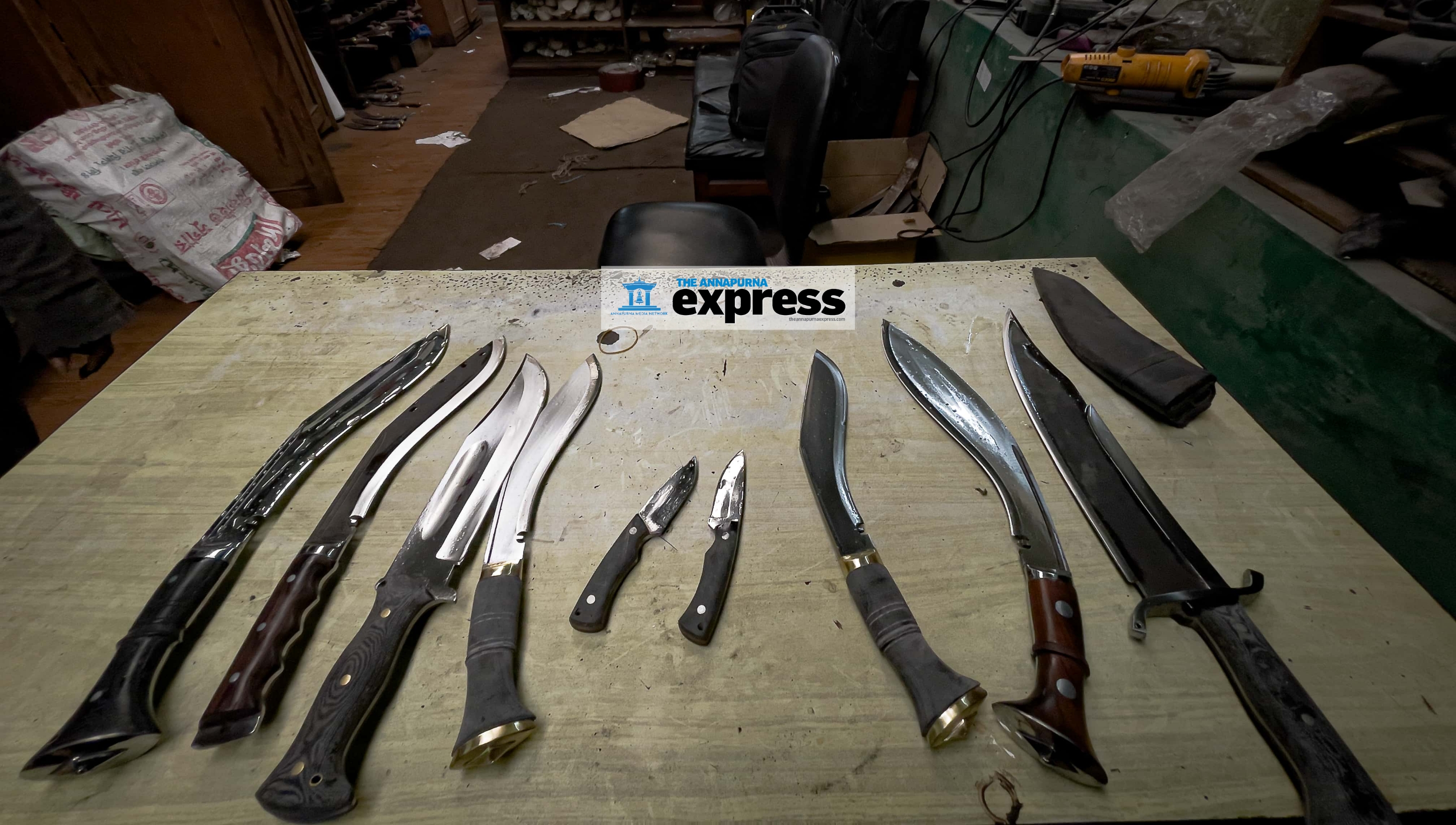
These metals are either imported from India or collected from scrap yards. “Suspension spring plates are ideal for making khukuris,” says Limbu.
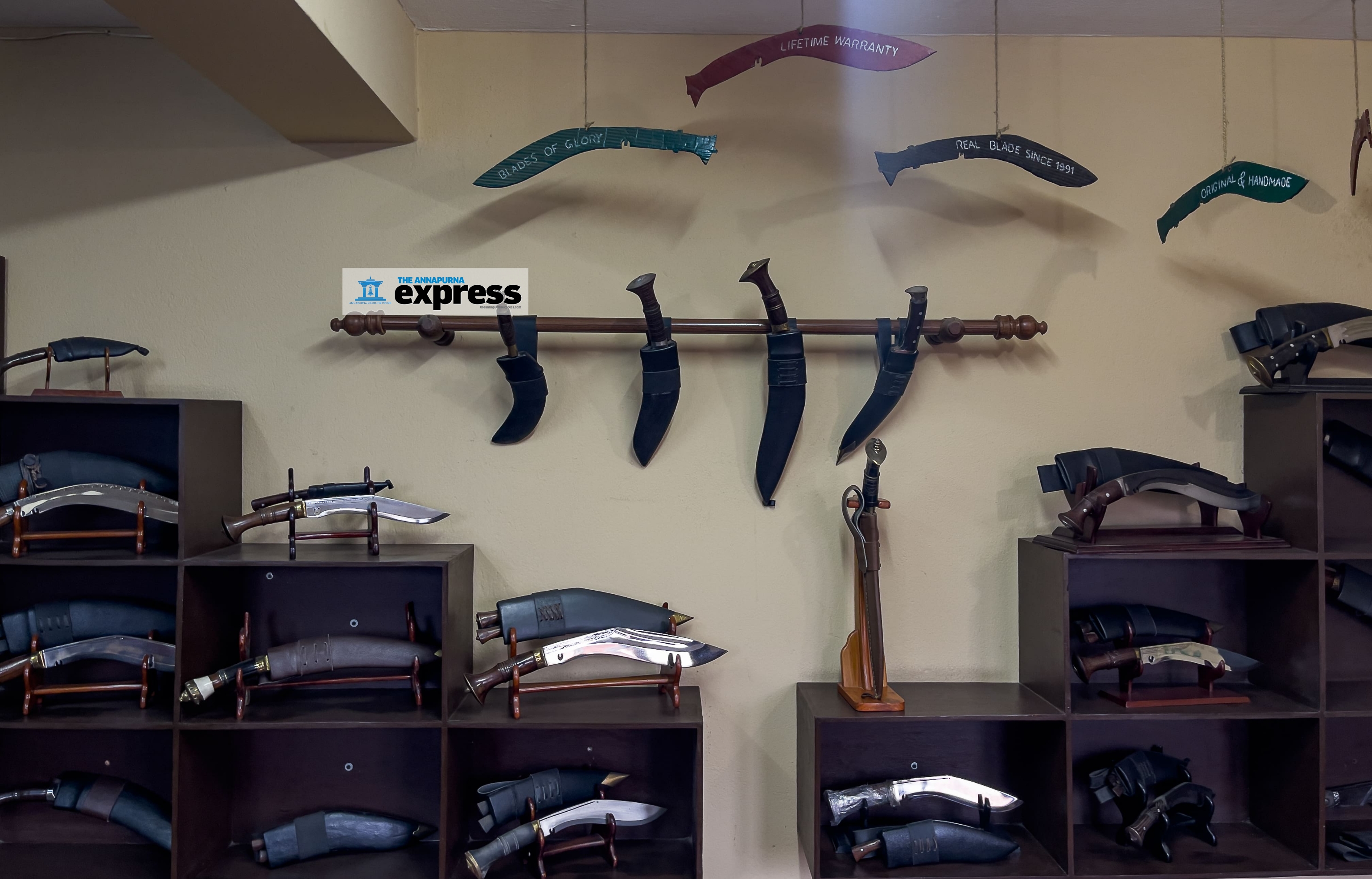
The metals are hammered and forged, which entails beating them under heat to give them the distinct khukuri shape. The blades are then quenched, whereby they are heated in a furnace, dipped in water and beaten repeatedly.
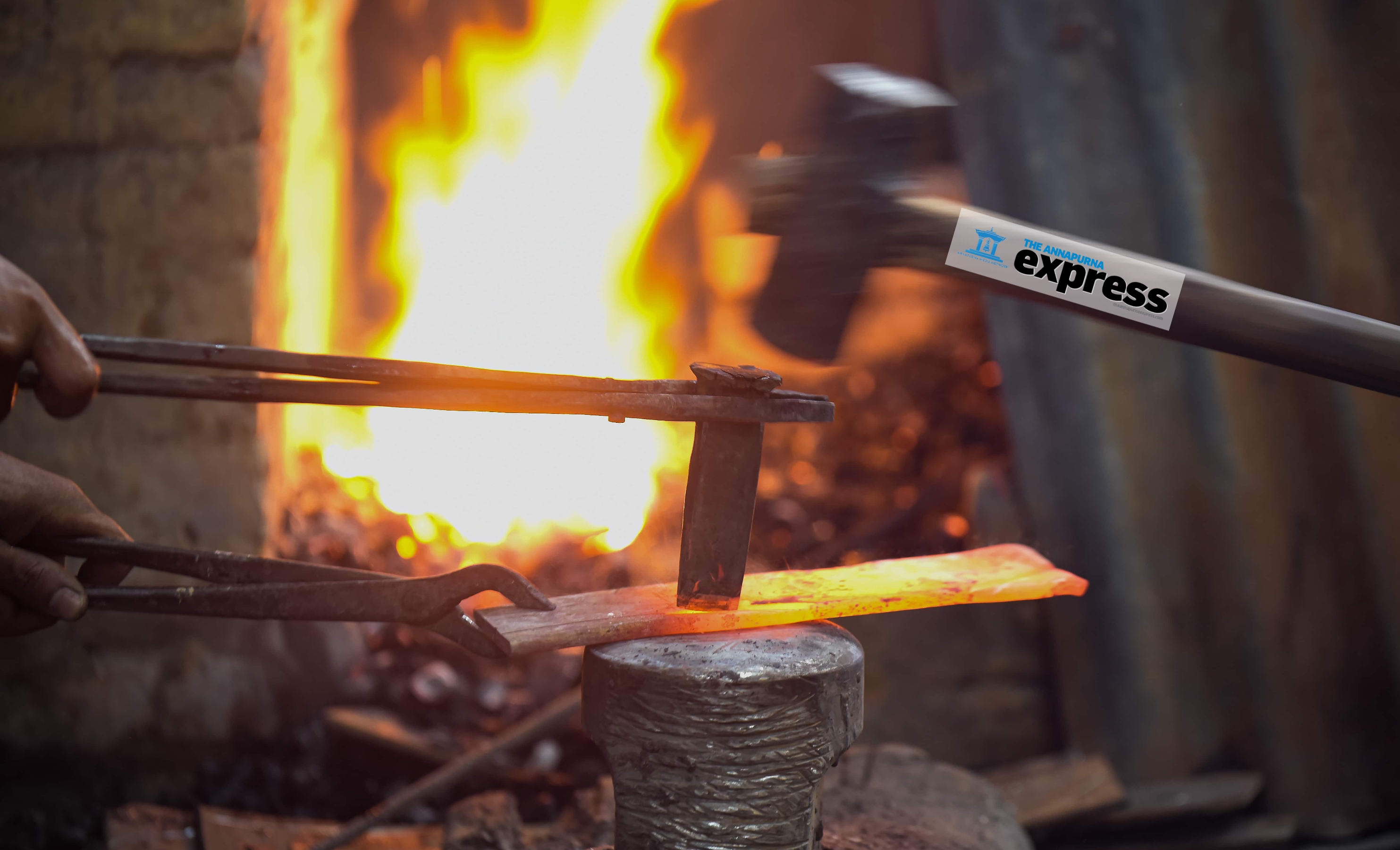
Quenching essentially improves metal’s performance. “It ensures the blade’s strength and quality,” says Limbu. Once the blades are ready they are sharpened and polished.
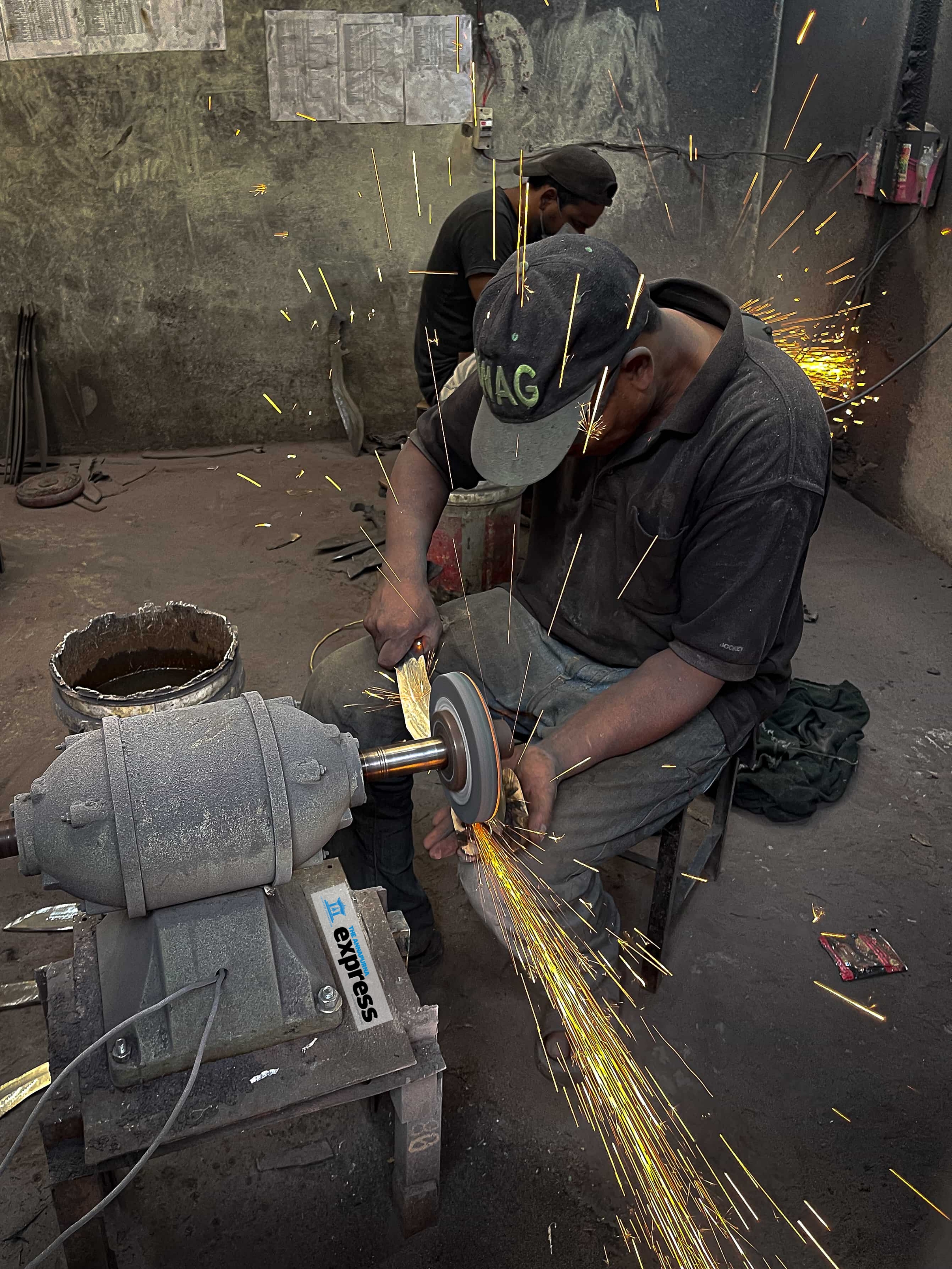
The blade’s sharpness is tested on buffalo horn, wood and paper. Each strike and slice should make a clean cut, without denting the blade.
Khukuris stand out for its distinct recurve shape, but they are of many kinds, as different as the regions of their origin in Nepal.
The differences, says Limbu, are discernible to khukuri enthusiasts, collectors and makers.
KHHI forges up to 200 khukuris of different kinds and sizes in a week. “Most of our khukuris are exported to the US and Europe,” says Limbu. “We also do commission work.”
The most expensive khukuri the factory ever made went for Rs 200,000.
Bipana Sharma: A young champion of Child rights
One of Bipana Sharma’s earliest memories is seeing girls of her age working while she was going to school. She remembers asking her father who was supposed to send them to school. To this she got a terse reply: ‘Sarkarko kaam ho’ (it’s the government’s job).
“I was just a little girl then and I thought ‘sarkar’ was a person,” says Sharma, who is now 23.
She later found out the meaning of the word. Indeed, the government must ensure all children get the opportunity to go to school. But that was not happening in Sharma’s hometown of Sunwal, Parasi. The situation was far worse in fact. Girls barely in their early teens were getting married off or worse, getting trafficked.
Sharma was a precocious child. It didn’t take her long to figure out what was going on. Children in her community had no say in their future. They were not safe and had no rights.
So Sharma decided to set things right. In 2010, at the tender age of 11, she founded Ekta Child Club Sunwal. Getting children in her community to join the club was difficult. “Most parents wouldn’t consent to the idea,” says Sharma. She visited every house in her neighborhood, convincing adults to allow their children to be part of the club.
At length the club managed to get 40 members. It was the beginning of Sharma’s journey in child rights activism.
“You need the mass if you want to be heard and make a change,” says Sharma. Survival, development, protection and participation were the four things the club wanted for all children. Sharma and her club friends were a hardy bunch, determined to address the social ills afflicting their peers. Their primary area of work was putting a stop to child marriage.
Sharma and her club friends were the gatekeepers and whistleblowers that saved many girls from early marriage. They worked closely with the local authorities to break up many weddings with underage brides.
In several cases, they intercepted the groom’s family and friends on their way to get the bride. They also rescued young girls who had been married off and reunited them with their parents. The club’s goal was to stop child marriage from happening in the first place, but it was not always possible, says Sharma. “We had to intervene and disrupt things.”
Ekta Child Club started gaining a reputation for its work. What began as a small cohort of children working for the rights of children started amassing many members. It also inspired other children to form similar clubs.
Sharma has become a role model for many youths across the country. Samir Pariyar, a fellow club member, describes Sharma as an inspirational figure and a born leader.
“We find her drive and courage inspirational,” he says. “She has a strong sense of right and wrong. She treated everyone equally.” The proudest moment of Sharma’s life, she says, was when Sunwal was declared Nepal’s first child-friendly municipality in 2015. She is pleased the club she founded also had a contribution to achieve that status for her hometown.
“Our club played a part in making Sunwal a child-friendly municipality,” Sharma says. “I wear this as a badge of honor.” In 2015, Sharma was feted with Asian Girl Human Rights Awards as well as first Glocal Teen Hero award for her contributions to child rights.
Sharma left her beloved club after she turned 18, but she still works closely with it and mentors its leaders and members. She is deeply invested on the issue of child rights. From making change at the community level, she has now moved on to the national level. These days Sharma’s mission is ensuring child-friendly local governance. She serves as a board member of National Level Child Governance Forum.
There is still a long way to go for Nepal to become a child-friendly country. While some municipal wards are making impressive progress, others lag far behind. “We will just have to try harder,” says Sharma. With her determination and belief, she will try.
Five beautiful books on friendship
Life is a little more bearable with friends. Good friends will lift us up when we’re feeling down. They will give us sound advice or a round of scolding, depending on what’s needed. They, in many ways, make us who we are. Having just celebrated friendship day (July 30), I’m going to give my closest friends a book that celebrates the bond that we have. I might also sneak in a reread. Here are my top five picks.
The Kite Runner by Khaled Hosseini
This is an unforgettable story of the unlikely and tragic friendship between a rich boy and the son of his father’s servant. Not just friendship but also love, betrayal and redemption. Trigger warning though, it’s a bit violent at times and the story is disturbing. But it’s a hauntingly good and conscience-nudging story about the good and the bad that humans are capable of, and the lengths we go to for our dearest friends.
A Little Life by Hanya Yanagihara
A book about four college friends as they navigate life in New York, A Little Life will break your heart. You will cry ugly tears but it will be worth it. Four friends Jude, Willem, Malcolm, and JB, help one another through the highs and lows of success, addiction, trauma and grief. You’ll see yourself and your friends in the characters, and thus it feels extremely cathartic. It’s a thick book but rest assured you will breeze through it as you won’t want to put it down.
The Giver of Stars by Jojo Moyes
Set in small-town 1930’s Kentucky, the book is based on the real-life Pack Horse Librarians of Kentucky, or the Horseback Librarian program as it was called then. The program delivered books as part of Eleanor Roosevelt’s traveling library and ran from 1935 to 1943, making books accessible to over 100,000 rural inhabitants. The story is tender and heartbreaking and celebrates the power of books and female friendships.
Marley and Me by John Grogan
This is based on a true story about a dog named Marley, a yellow Labrador, who was, according to Grogan, the naughtiest dog in the world. Marley is hyperactive and destructive. That causes many problems for the family. The book is about how they learn to adapt to him and their grief after Marley’s death. His antics will make you laugh, cry, and hug your own pet a little harder. Marley and Me celebrates the bond we share with our four-legged friends and reminds us to be gentler with them.
The Joy Luck Club by Amy Tan
Amy Tan writes good books with complex relationships. You couldn’t go wrong with any of her works but The Joy Luck Club tops my list of favorites. It’s a story about four Chinese women who are new to the city of San Francisco. They are homesick but they find comfort in one another. The book also explores the bond between mothers and daughters and the friendship that people of different generations can share.
Photo Feature | Saturday morning leg-flexing at Shivapuri
Okay, with all the rain around, I accept that it’s not the perfect time for hiking. But what the heck, I thought? I could still do it.

So I headed towards Shivapuri National Park with a friend this past Saturday. It was a clear sunny morning (fingers crossed!), in what was near perfect conditions to go hiking in the hills surrounding Kathmandu Valley.

We set out for Bishnudwar, the origin of Bishnumati River and a popular hiking destination.
The hike begins in earnest from the main entrance of Shivapuri National Park at Budhanilkantha, and it can take up to four hours to get to the top. If you have a two-wheeler you can ride all the way up to the village of Dandagaun, from where you can reach Bishnudwar in about two-and-a-half hours.

Rain or shine, there are likely to be many hikers and cyclists along the trail, particularly on weekends, so you are unlikely to get lost.

The way to Danda Gaun from Budhanilkantha is particularly beautiful with its well-preserved path that passes through a forest.

There were many vehicles parked at Dandagaun. They had come bearing hikers and picnickers visiting Bishnudwar on this clear Saturday morning.

If you are coming here for a hike, don’t bother to carry snacks: there are many eateries and resorts at Dandagaun. That way, you will feel lighter on your foot too.
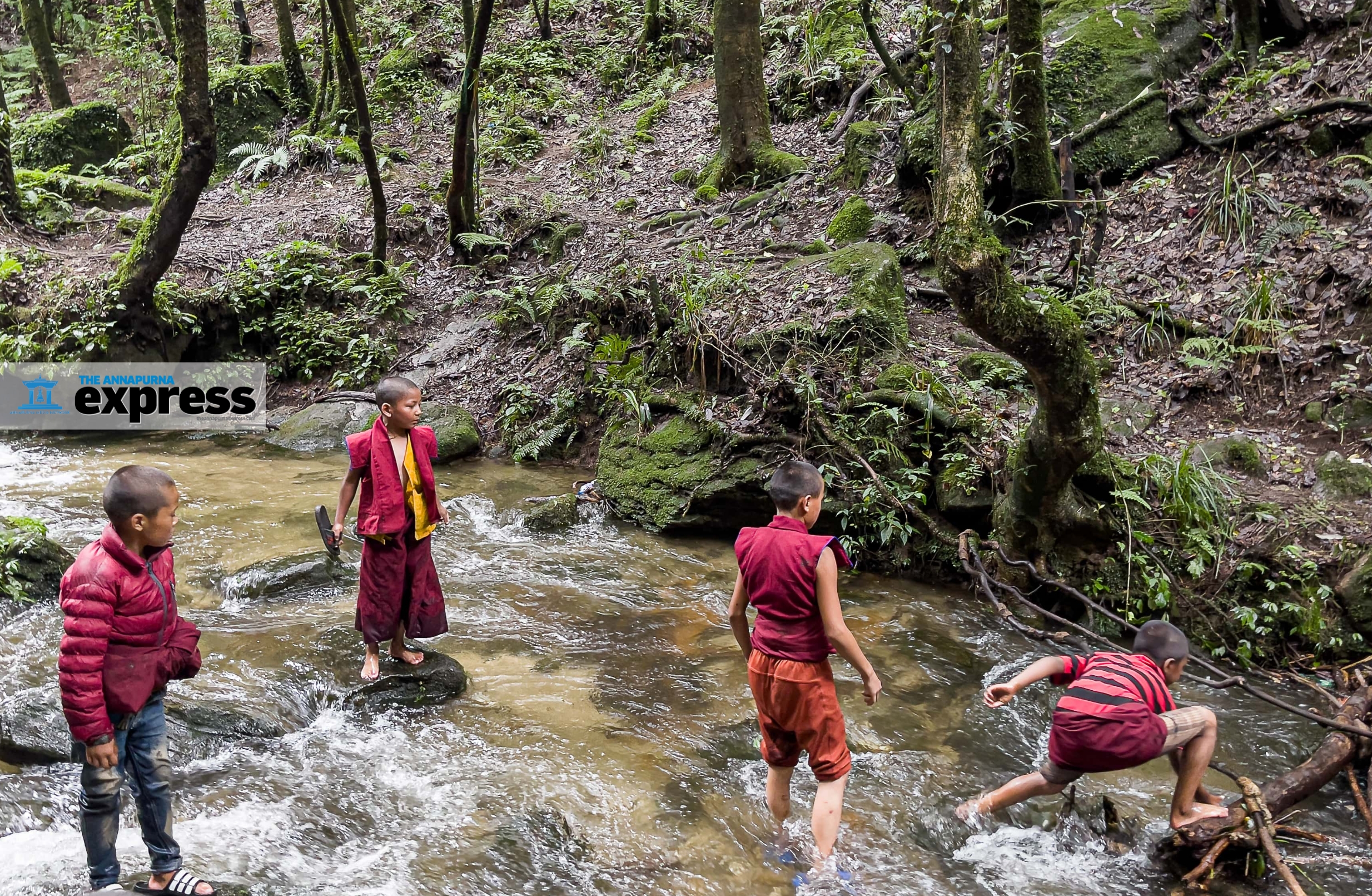
The trail to Bishnudwar from Dandagaun passes through more dense forest, and the path is decent enough for cycles and motorcycles.

Weather permitting, you can also catch stunning views of Kathmandu Valley from some spots.

The main draw of Bishnudwar are its forest stream and the waterfall. The place is generally crowded with selfie-takers and TikTokers during weekends.
You can climb further up towards the main waterfall, but the path can be slippery, so caution is advised.



















